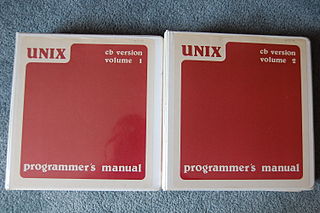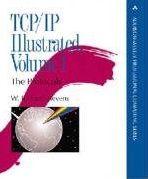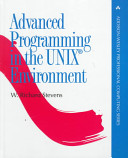
Dennis MacAlistair Ritchie was an American computer scientist. He created the C programming language and the Unix operating system and B language with long-time colleague Ken Thompson. Ritchie and Thompson were awarded the Turing Award from the Association for Computing Machinery (ACM) in 1983, the IEEE Richard W. Hamming Medal from the Institute of Electrical and Electronics Engineers (IEEE) in 1990, and the National Medal of Technology from President Bill Clinton in 1999.
The Portable Operating System Interface is a family of standards specified by the IEEE Computer Society for maintaining compatibility between operating systems. POSIX defines application programming interfaces (APIs), along with command line shells and utility interfaces, for software compatibility (portability) with variants of Unix and other operating systems. POSIX is also a trademark of the IEEE. POSIX is intended to be used by both application and system developers.
A Berkeley (BSD) socket is an application programming interface (API) for Internet domain sockets and Unix domain sockets, used for inter-process communication (IPC). It is commonly implemented as a library of linkable modules. It originated with the 4.2BSD Unix operating system, which was released in 1983.
An ephemeral port is a communications endpoint (port) of a transport layer protocol of the Internet protocol suite that is used for only a short period of time for the duration of a communication session. Such short-lived ports are allocated automatically within a predefined range of port numbers by the IP stack software of a computer operating system. The Transmission Control Protocol (TCP), the User Datagram Protocol (UDP), and the Stream Control Transmission Protocol (SCTP) typically use an ephemeral port for the client-end of a client–server communication. At the server end of the communication session, ephemeral ports may also be used for continuation of communications with a client that initially connected to one of the services listening with a well-known port. For example, the Trivial File Transfer Protocol (TFTP) and Remote Procedure Call (RPC) applications can behave in this manner.

In computer science, interprocess communication (IPC) is the sharing of data between running processes in a computer system. Mechanisms for IPC may be provided by an operating system. Applications which use IPC are often categorized as clients and servers, where the client requests data and the server responds to client requests. Many applications are both clients and servers, as commonly seen in distributed computing.
William Richard (Rich) Stevens was a Northern Rhodesia–born American author of computer science books, in particular books on Unix and TCP/IP.

Unix System V is one of the first commercial versions of the Unix operating system. It was originally developed by AT&T and first released in 1983. Four major versions of System V were released, numbered 1, 2, 3, and 4. System V Release 4 (SVR4) was commercially the most successful version, being the result of an effort, marketed as Unix System Unification, which solicited the collaboration of the major Unix vendors. It was the source of several common commercial Unix features. System V is sometimes abbreviated to SysV.
In Unix and Unix-like computer operating systems, a file descriptor is a process-unique identifier (handle) for a file or other input/output resource, such as a pipe or network socket.
In computer networking, the Transport Layer Interface (TLI) was the networking API provided by AT&T UNIX System V Release 3 (SVR3) in 1987 and continued into Release 4 (SVR4). TLI was the System V counterpart to the BSD sockets programming interface, which was also provided in UNIX System V Release 4 (SVR4). TLI was later standardized as XTI, the X/Open Transport Interface.
The Berkeley r-commands are a suite of computer programs designed to enable users of one Unix system to log in or issue commands to another Unix computer via TCP/IP computer network. The r-commands were developed in 1982 by the Computer Systems Research Group at the University of California, Berkeley, based on an early implementation of TCP/IP.
In computer networking, STREAMS is the native framework in Unix System V for implementing character device drivers, network protocols, and inter-process communication. In this framework, a stream is a chain of coroutines that pass messages between a program and a device driver. STREAMS originated in Version 8 Research Unix, as Streams.
Computer network programming involves writing computer programs that enable processes to communicate with each other across a computer network.
A network socket is a software structure within a network node of a computer network that serves as an endpoint for sending and receiving data across the network. The structure and properties of a socket are defined by an application programming interface (API) for the networking architecture. Sockets are created only during the lifetime of a process of an application running in the node.

Columbus UNIX, or CB UNIX, is a discontinued variant of the UNIX operating system used internally at Bell Labs for administrative databases and transaction processing. It was developed at the Columbus, Ohio branch, based on V6, V7 and PWB Unix. It was little-known outside the company.

In Unix and operating systems inspired by it, the file system is considered a central component of the operating system. It was also one of the first parts of the system to be designed and implemented by Ken Thompson in the first experimental version of Unix, dated 1969.
The X/Open Transport Interface (XTI) is an Open Group specification for network application programming present in UNIX System V operating systems. It provides OSI transport layer services with protocol independence. Although Open Group considers this specification withdrawn, an implementation is part of the standard programming interfaces on modern UNIX System V operating systems where it is implemented using the STREAMS character input/output mechanism.

TCP/IP Illustrated is the name of a series of 3 books written by W. Richard Stevens. Unlike traditional books which explain the RFC specifications, Stevens goes into great detail using actual network traces to describe the protocol, hence its 'Illustrated' title.

Advanced Programming in the Unix Environment is a computer programming book by W. Richard Stevens describing the application programming interface of the UNIX family of operating systems. The book illustrates UNIX application programming in the C programming language.

In computer science, shared memory is memory that may be simultaneously accessed by multiple programs with an intent to provide communication among them or avoid redundant copies. Shared memory is an efficient means of passing data between programs. Depending on context, programs may run on a single processor or on multiple separate processors.








